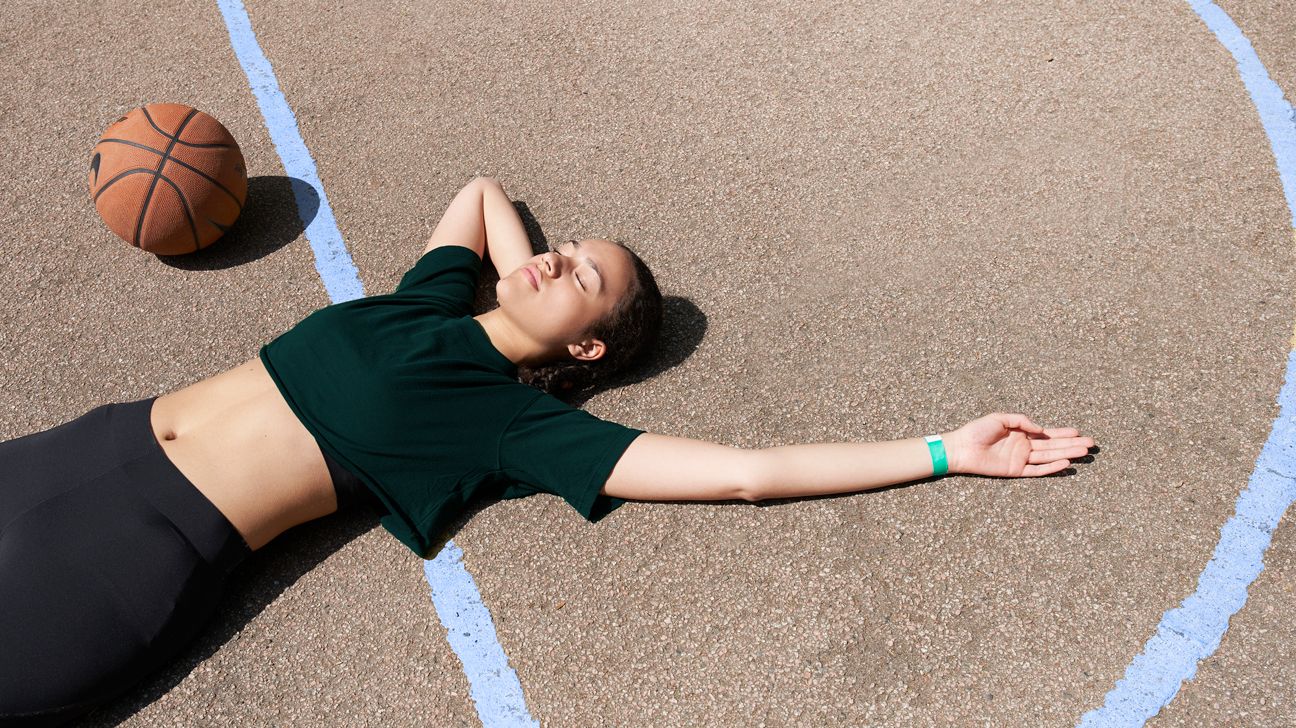“Active recovery can be any activity that puts you in touch with your body without using a lot of muscular strength,” says Kelly Bryant, a personal trainer based in Stuart, Florida.
It shouldn’t feel like work, she says, but it should keep you moving.
Whether you’re doing active recovery exercises between sets during a weights workout or trying to bounce back after a half-marathon, some movement is better than no movement.
Active recovery workouts might look like:
- taking a walk or bike ride for an hour the day after a half-marathon
- practicing gentle yoga the day after a 100-mile bike ride
- walking on the treadmill between intervals of your strength workout
- hiking with friends the day after your soccer game
- alternating between swimming laps and HIIT workouts during the week
- foam rolling your muscles as part of your cooldown
Active recovery is no substitute for rest days or sleep, but it can help your body feel better after tough workouts. Some of the benefits of active recovery are:
- increased blood flow
- flushing of lactic acid from your muscles
- less soreness (or shorter periods of soreness)
- maintained or increased flexibility and range of motion
Want to work an active recovery day (or three) into your routine? Here’s how:
1. During HIIT or interval training
When you’re pushing your limits during a HIIT workout, your body definitely needs a chance to rest and get your heart rate down. But instead of scrolling Instagram or taking selfies during your breaks (hey, no judgment!), you can integrate some active recovery intervals.
- During a sprinting workout at the track: Walk at a moderate pace as you catch your breath.
- During a strength workout: Swap in calisthenics between sets instead of standing around waiting for your next move.
- During a soccer game: Jog in place slowly or pace the sidelines to keep your heart rate up between plays.
2. In your post-workout cooldown
Tempting as it might be to collapse in the grass after a hard bike ride or run, keeping your wheels turning or legs moving can actually help you recover. End every cardio session with 10 minutes of easy movement.
- After a bike ride: Keep your legs moving — but at a pace slow enough that you could carry on a conversation.
- After a run: Walk at a moderate pace or jog slowly at about 50 percent effort.
- After a weightlifting session or HIIT workout: Ride a stationary bike or climb on the elliptical, reducing your effort every couple of minutes.
3. On a rest day
You need rest days, says Bryant. They help you “recover fully to show up better and stronger in the future.” But unless you’re injured or truly exhausted, you might rethink what “rest” looks like.
- If you normally run: Take a walk with a friend, spend some time on the rowing machine, or swim laps.
- If you usually lift weights or do HIIT: Block out an hour with your foam roller and trigger-point release balls.
- If you’re a cyclist: Stretch out the areas that get tight on the bike and do some gentle cardio that moves your body in other ways, like swimming or hiking.
4. After a race or competition
The day after a race or competition can be tough. Fight the urge to stay in bed when you feel like you’ve been mowed over by a truck, and your body will thank you (eventually).
- After a running race: Make time for yoga, focusing on your feet, ankles, hips, and glutes.
- After a bike race: Go for a walk, and then foam roll your quads and glutes.
- After an obstacle-course challenge: Meet your race partner at the park for a walk as you recap the event.
- After any big event: Walk to your favorite bakery or restaurant and treat yourself to something tasty for even more recovery self-care!
Active recovery takes more effort than passive recovery (such as watching TV on the couch or staying in bed all day reading), but research shows you get what you give.
According to studies from the American Council on Exercise, active recovery is a better choice than passive recovery — or what you might consider rest.
However, you can opt for passive recovery if you’re injured, exhausted, or feeling under the weather in any way. And while experts say active recovery is better, only you know your body. So, do you — even if that means a day spent lounging at the pool!
One more option is to meet in the middle: Active recovery is about gentle movement, and it doesn’t have to be lengthy. If you need to mostly rest or spend half the day on the couch before doing your active recovery session, go for it!
tl;dr
- Active recovery can be any moderate-intensity activity that gets your blood flowing (but just a little).
- Hiking, walking, gentle yoga, foam rolling, swimming, and riding your bike around town are all active recovery workouts.
- Beyond blood flow, active recovery helps flush out lactic acid from your muscles to reduce soreness.
- Work it into your HIIT or weight training, cooldown sessions, rest days, and post-race recovery plans.
- Passive recovery is total rest. Choose this option when you’re injured or sick or you just need a break.


